In the heart of every home lies a palette of colors that speaks volumes about the people who inhabit it. Whether you’re a seasoned decorator or just dipping your toes into the world of interior design, embracing minimalist earthy color palettes can transform your space into a serene and inviting haven. These palettes, rooted in nature’s own hues, offer more than just aesthetic appeal—they cultivate a sense of calm and connectedness that reverberates throughout your living environment.
Exploring the world of minimalist earthy tones, we invite you to discover how subtle shades of taupe, olive, and terracotta can redefine simplicity with sophistication. This article will guide you through ten curated palettes, each thoughtfully designed to enhance your interiors with a touch of elegance and tranquility. By the end, you’ll not only have a deeper appreciation for the power of color but also practical insights to effortlessly incorporate these palettes into your own home. Whether you’re refreshing a single room or reimagining your entire space, these earthy tones promise to bring warmth and harmony to your surroundings.
Understanding Earthy Minimalist Aesthetics
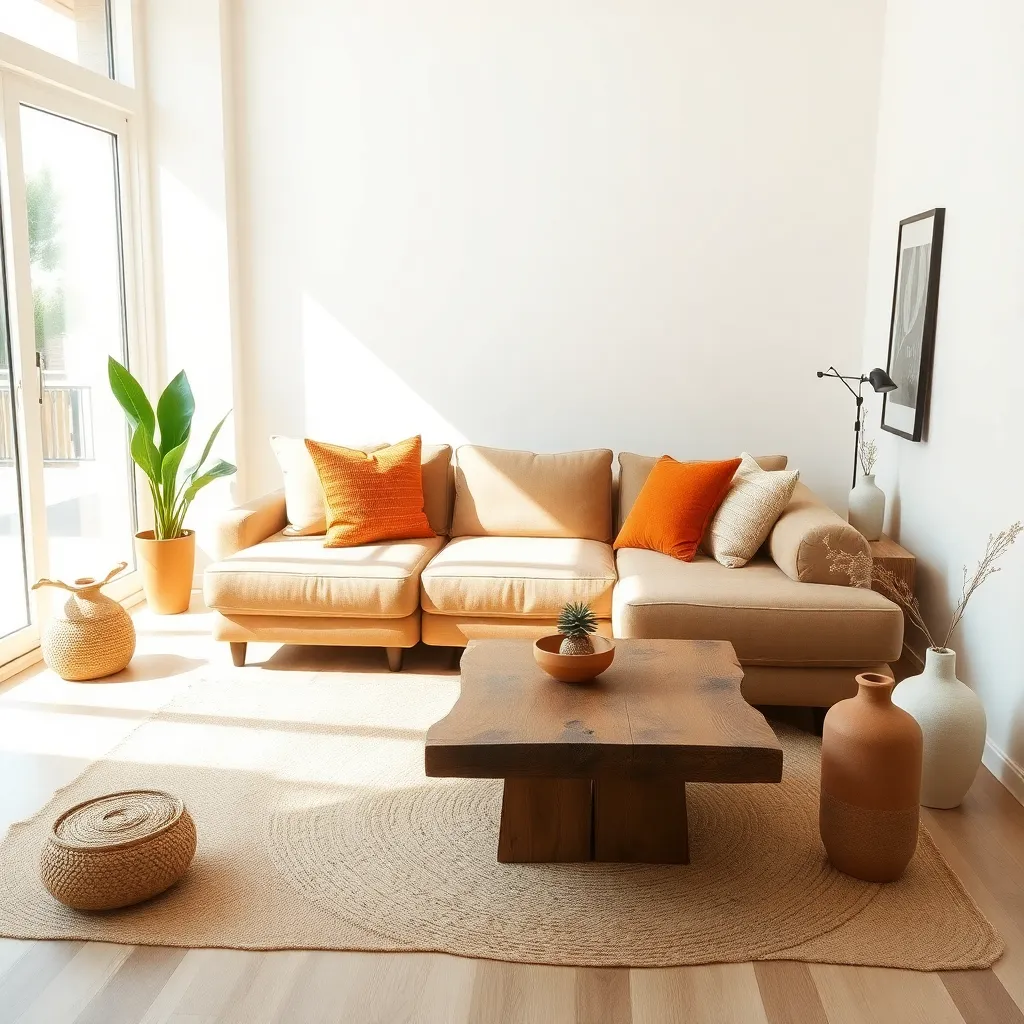
Earthy minimalist aesthetics blend simplicity with natural elements, offering a calming and serene environment. To achieve this look, focus on a neutral color palette that includes shades like taupe, beige, and soft greens, which evoke the colors of nature.
Incorporating natural materials is key to this aesthetic, so consider furniture made from wood, stone, or jute. Opt for pieces with clean lines and simple forms to maintain the minimalist vibe, ensuring they harmonize with the overall color scheme.
Beginner decorators can start by selecting a few statement pieces, such as a wooden coffee table or a stone vase, to anchor the room. Advanced tips include layering textures by adding a jute rug or linen throw pillows to create depth without overwhelming the space.
When arranging furniture, prioritize functionality and flow by keeping pathways clear and avoiding clutter. Position seating to encourage conversation, perhaps around a central focal point like a fireplace or a large window, to enhance the room’s inviting atmosphere.
Exploring Warm Neutrals and Browns
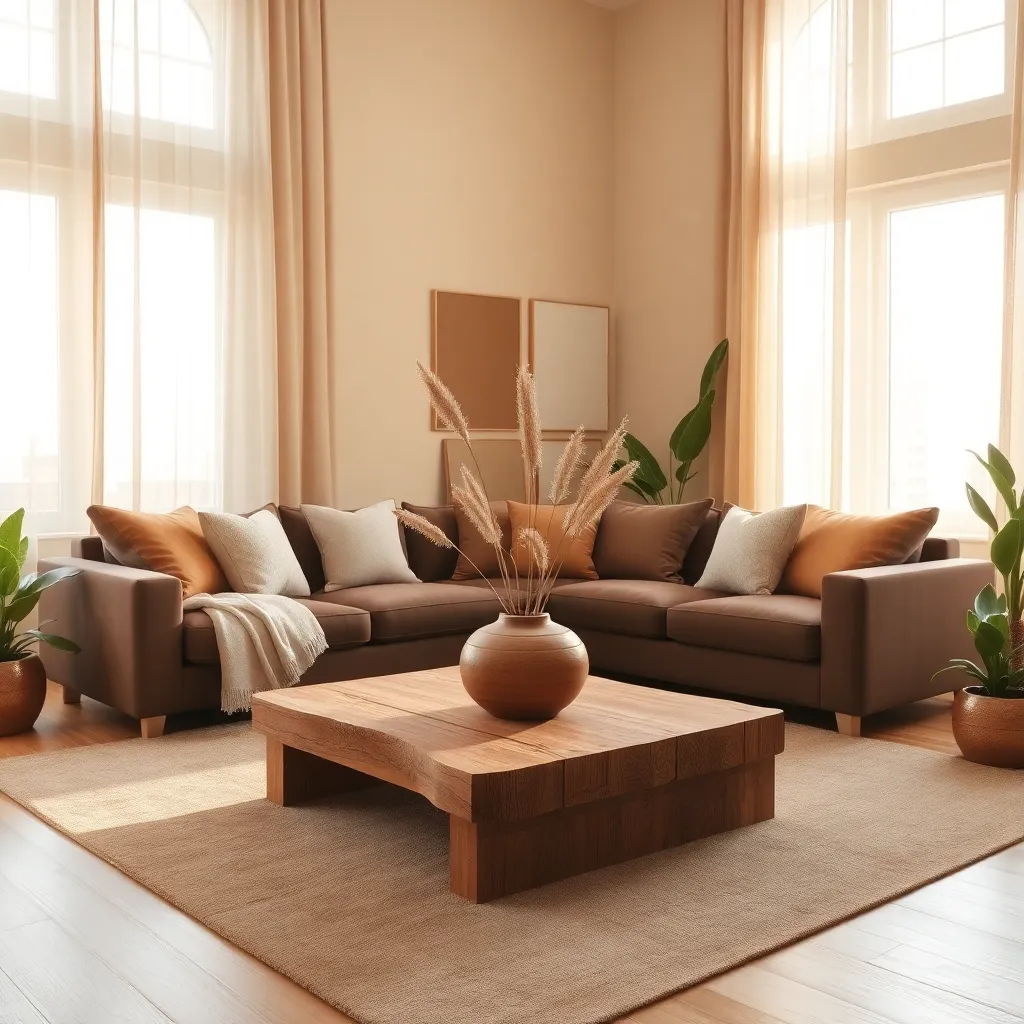
Warm neutrals and browns create a cozy, inviting atmosphere that embodies the essence of earthy minimalist aesthetics. To incorporate these colors, start with a base of soft taupe or beige walls, which provide a neutral backdrop that complements a variety of textures and furnishings.
Consider adding depth with furniture pieces in rich, chocolate brown or caramel tones. A leather sofa in a warm brown hue can serve as a focal point in the living room, paired with throw pillows and blankets in lighter shades for contrast and comfort.
Layering different shades of brown and neutral tones can add visual interest without overwhelming the space. Use a mix of materials such as wood, linen, and wool to enhance the natural feel and introduce subtle variations in tone and texture.
For an advanced touch, integrate metallic accents in bronze or copper to add a hint of luxury and warmth. These can be implemented through fixtures, picture frames, or even small decor pieces like vases or candleholders to create a cohesive, sophisticated look.
Incorporating Soothing Green Hues
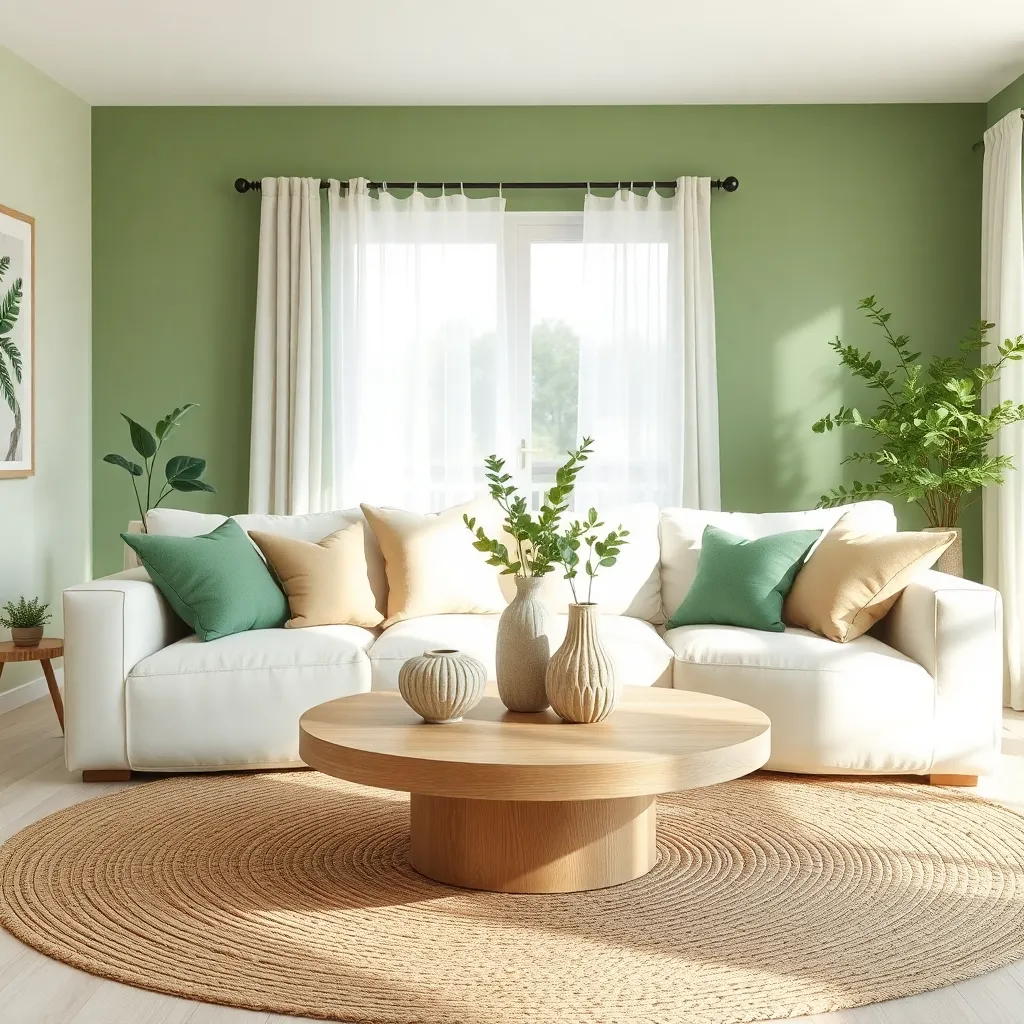
Incorporating soothing green hues into your interior design can create a tranquil and refreshing atmosphere. To achieve this, start by selecting a muted green paint for the walls, such as sage or olive, which pairs beautifully with neutral furnishings.
Consider adding accents like lush, leafy plants or botanical prints to enhance the natural vibe. For furniture, choose pieces in natural materials like rattan or wood to complement the green tones and maintain a cohesive look.
Experiment with different textures to add depth and interest to your space. A plush green velvet throw or a moss-colored wool rug can introduce warmth and comfort, making the room feel inviting.
For a more advanced approach, incorporate varying shades of green to create a layered effect. You might use deeper emerald tones for upholstery and lighter mint shades for smaller decor elements, ensuring a balanced and sophisticated aesthetic.
Subtle Grays for Tranquil Spaces
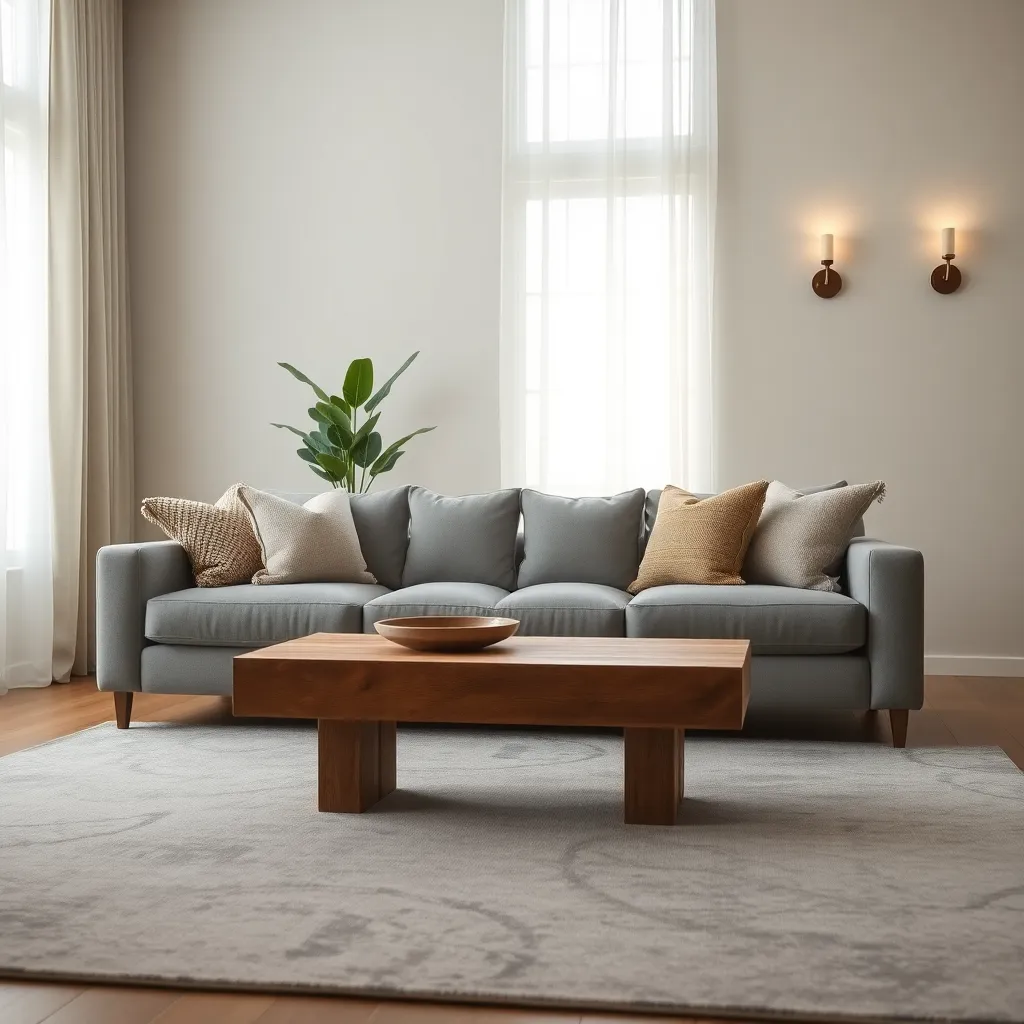
Embracing subtle grays in your interior design can create a tranquil and sophisticated atmosphere that suits any minimalist space. Begin by selecting shades like charcoal or dove gray for your walls, which provide a neutral backdrop that allows other design elements to shine.
To add depth and warmth, incorporate gray textiles such as throws, cushions, and rugs in varying textures like velvet, linen, or wool. This layering technique not only enhances the tactile experience but also adds visual interest without overwhelming the simplicity of the space.
Furniture in shades of gray, such as a sleek slate sofa or a soft ash armchair, can serve as the centerpiece in a living room, offering both comfort and style. For a balanced look, pair your gray furniture with natural materials like wooden tables or rattan baskets, which introduce warmth and organic elements.
For those looking to experiment further, consider incorporating metallic accents, such as brushed nickel or pewter, to complement the gray tones and add a modern touch. Mirrors with gray-tinted frames can also enhance the sense of space and light, making rooms feel more open and airy.
Balancing Soft Beige and Taupe
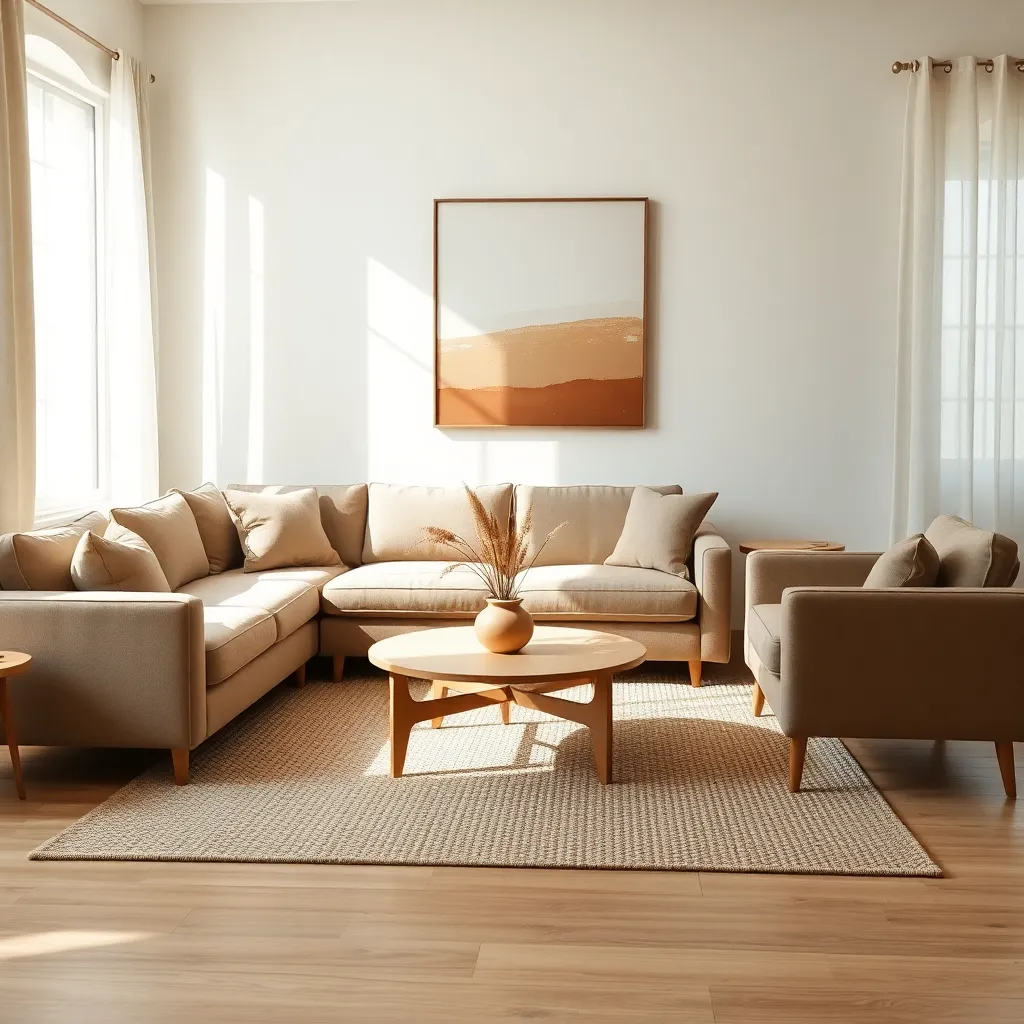
Achieving a harmonious balance between soft beige and taupe in your interior design can create a warm and inviting atmosphere. Start by choosing one of these colors as the dominant wall shade to establish a cohesive foundation for your space.
Consider using taupe for larger furniture pieces like sofas or armchairs to create a grounding effect. Pair these with beige accents, such as throw pillows or rugs, to add layers of warmth and texture.
Incorporate a variety of materials to enhance the earthy tones, such as natural wood, linen, and wool. These materials not only complement the color scheme but also introduce a tactile element that can make the space more welcoming and cozy.
For those looking to add a touch of sophistication, select metallic accents in warm tones like brass or copper. These can be integrated through light fixtures or decorative elements, adding a subtle contrast that enriches the earthy palette without overpowering it.
Blending Earthy Tones with Whites
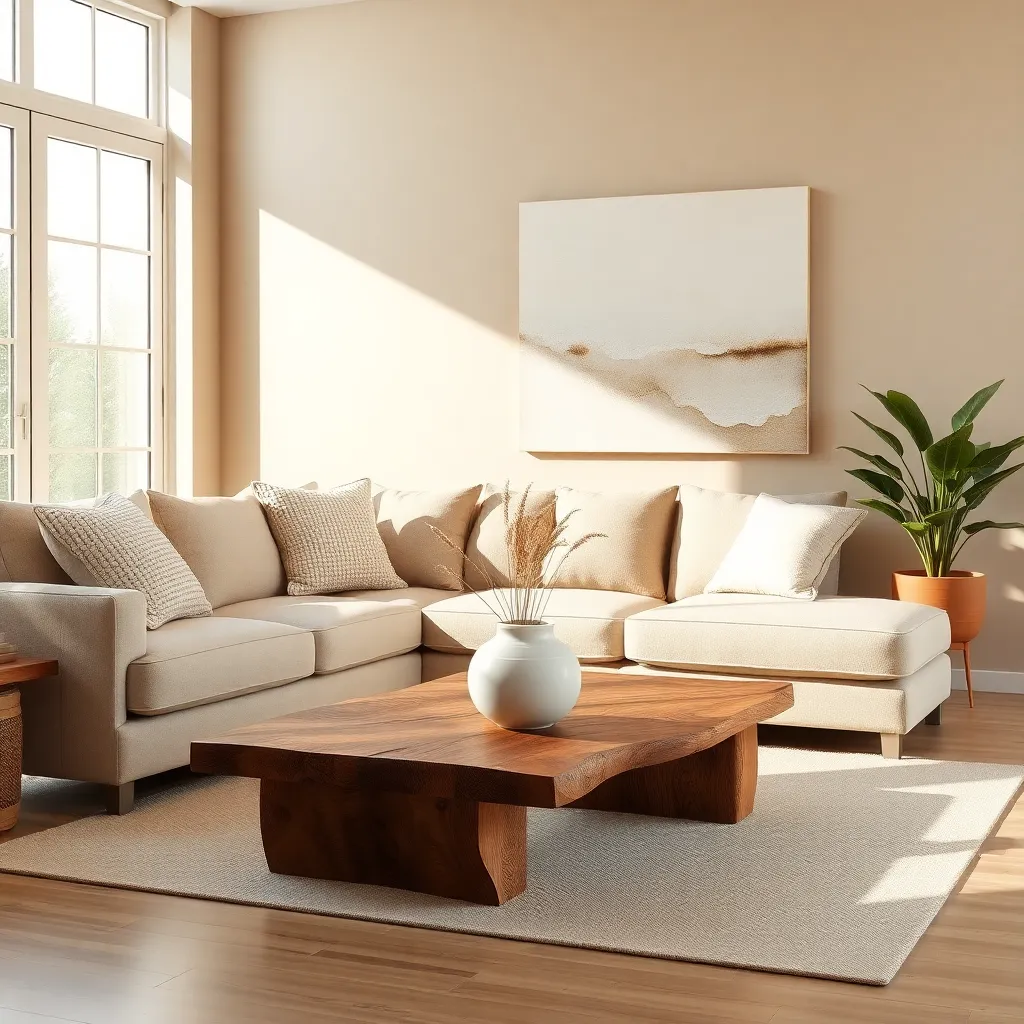
Incorporating earthy tones with whites creates a serene and sophisticated environment. Start by choosing a warm white as the base color for walls, and introduce earthy shades like terracotta or sage through textiles and accessories.
Consider using natural materials such as wood and linen to enhance the earthy vibe. A sleek, white sofa can form the centerpiece of your living room, complemented by cushions in muted greens or browns for a cohesive look.
For a more advanced approach, experiment with layering textures to add depth and interest to your space. Try a soft, white woolen rug under a wooden coffee table, and add a clay vase as a centerpiece to tie the elements together beautifully.
To maintain balance, ensure that the earthy tones are not overwhelming. Use a minimalist approach by selecting a few statement pieces rather than cluttering the space, allowing the neutral white backdrop to highlight each earthy accent.
Muted Terracotta for Cozy Vibes
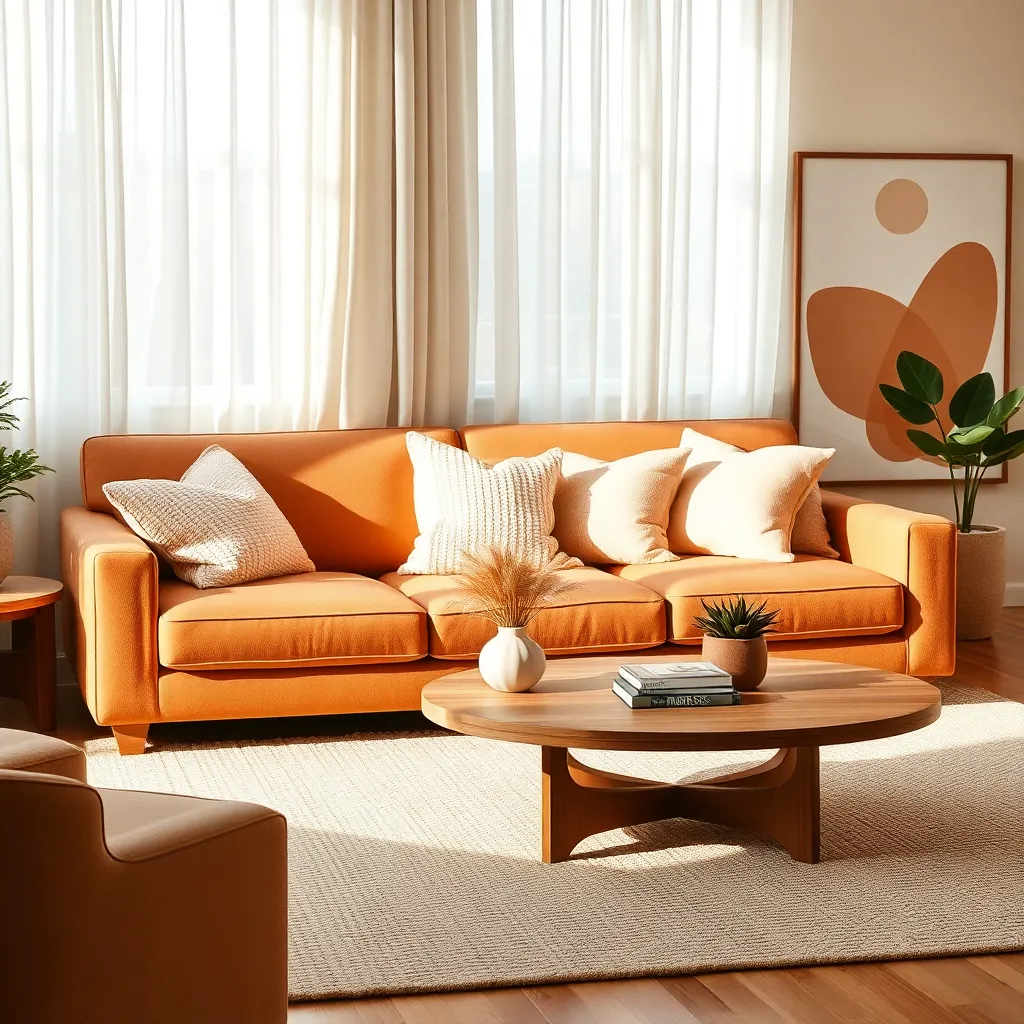
Muted terracotta is a versatile and warm color that can effortlessly bring cozy vibes to any interior space. To incorporate this earthy hue effectively, start by selecting a feature wall to paint in muted terracotta, creating an instant focal point that adds depth and warmth.
Consider pairing muted terracotta with complementary neutrals such as soft creams or light grays to maintain a minimalist aesthetic. This combination not only enhances the terracotta’s warmth but also provides a balanced, serene atmosphere perfect for relaxation.
For furniture, choose pieces made of natural materials like wood or rattan to harmonize with the terracotta’s earthy tones. Opt for simple, clean-lined furniture to keep the focus on the color palette while ensuring the space remains uncluttered and inviting.
Incorporate textiles such as throw pillows or rugs in muted terracotta to subtly introduce the color throughout the room. Adding layers with different textures can enhance the coziness without overpowering the minimalist design.
Creating Depth with Olive Shades
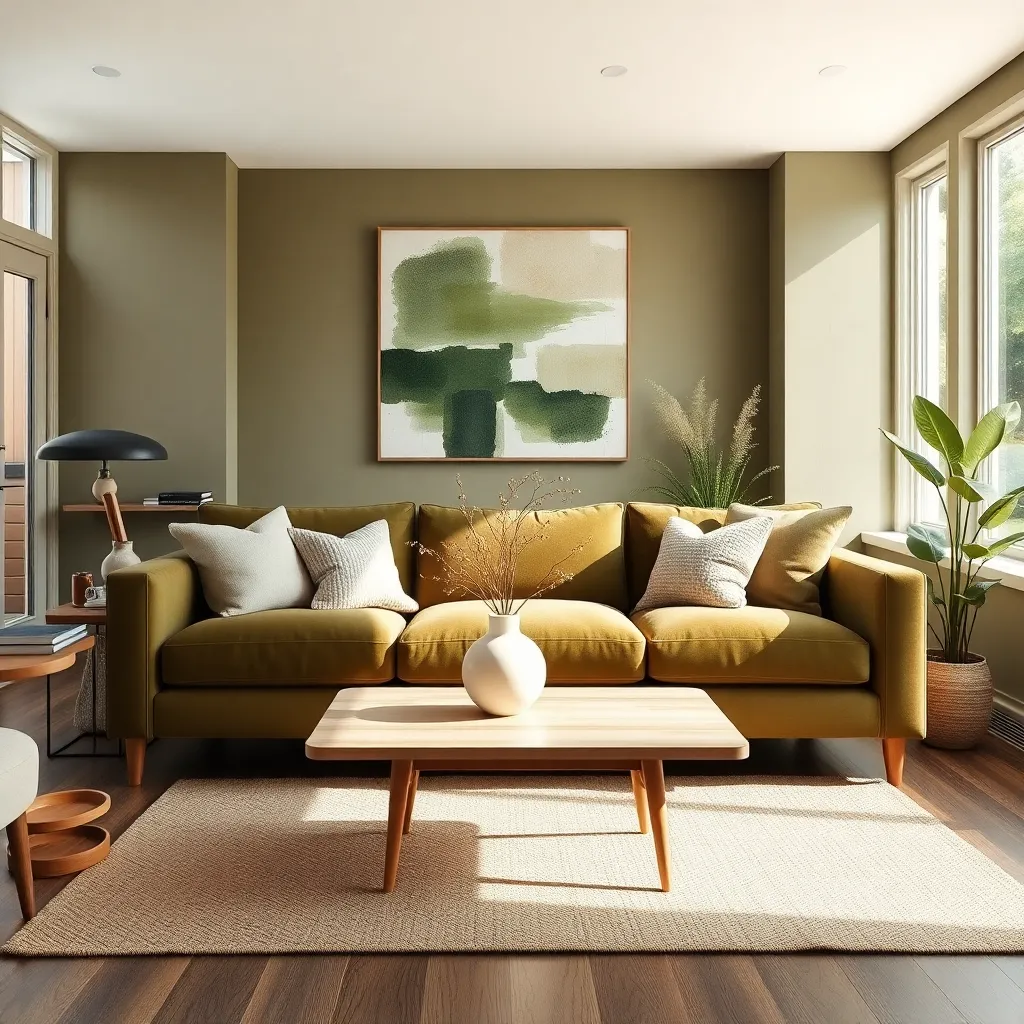
To create depth with olive shades, start by selecting a primary olive tone as the foundation for your room’s color palette. Layer this with varying intensities of olive to add dimension, such as using deeper olives on accent walls and lighter shades on larger surfaces like ceilings or rugs.
Furniture in natural materials complements olive beautifully, adding warmth and richness to your space. Consider incorporating wooden or rattan pieces which can introduce texture and maintain a minimalist aesthetic while enhancing the earthy vibe.
Incorporate different textures to prevent the olive shades from feeling flat. Use velvet or linen throw pillows on a sofa to create visual interest, and add a wool or jute rug to bring in more tactile layers that echo the natural theme.
For a sophisticated touch, introduce metallic accents such as brass or gold through light fixtures or decorative objects. These elements can reflect light and add a touch of luxury, balancing the organic feel of the olive palette with a hint of elegance.
Enhancing Interiors with Natural Accents
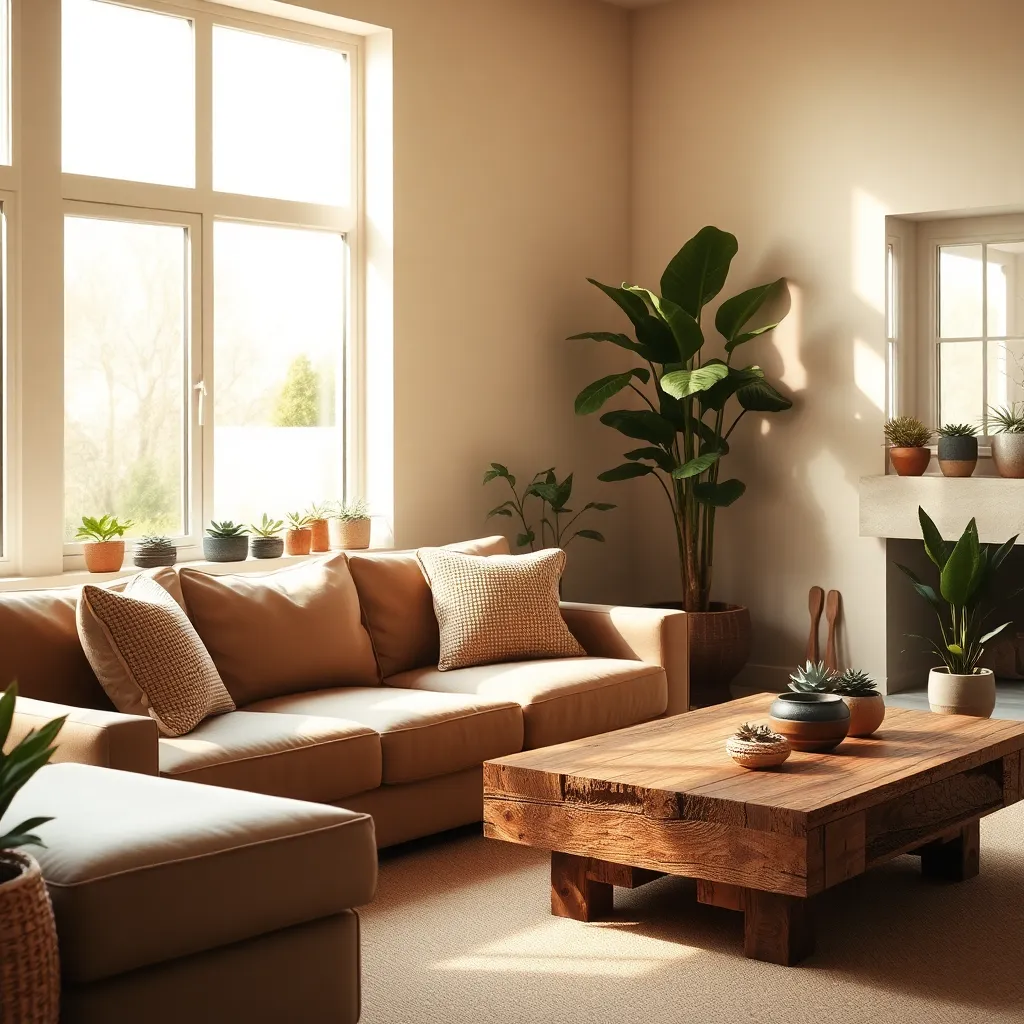
Incorporating natural accents into your minimalist earthy color palette can transform any space into a calming sanctuary. Consider using raw materials like wood, stone, or rattan to add texture and warmth. These elements work beautifully with the soft, muted hues of earthy tones, enhancing the organic feel of the room.
Start by selecting furniture pieces made from natural woods such as oak or walnut, which offer a rich contrast to lighter color palettes. Choose a simple, streamlined design to maintain the minimalist aesthetic while still highlighting the material’s natural beauty. Position these pieces strategically to create a sense of balance and flow in the room, ensuring each item complements the overall color scheme.
Adding plants is another effective way to incorporate natural accents. Opt for low-maintenance indoor plants like succulents or snake plants, which thrive in various lighting conditions. Place them in ceramic or terracotta pots to enhance the earthy palette and provide a pop of green that enlivens the space.
For an advanced touch, consider integrating natural textiles such as linen or cotton for your cushions, throws, or curtains. These materials not only add layers of texture but also help to soften the room’s overall appearance. Stick to neutral shades or subtle earth tones to maintain harmony and allow the natural accents to shine.
Achieving Harmony with Earthy Palettes
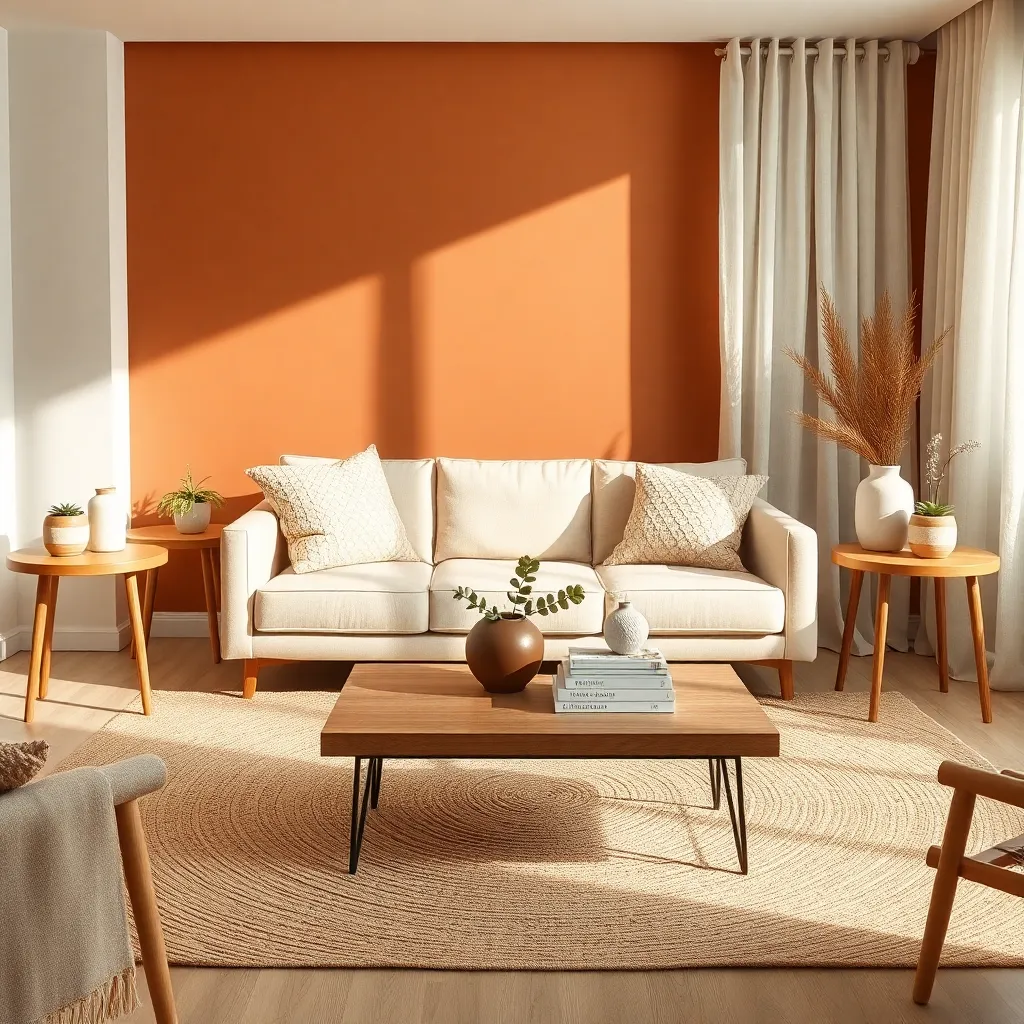
Creating harmony with earthy palettes involves balancing subtle nuances of natural colors. Begin by choosing a primary earthy tone, such as a warm taupe or soft stone, to serve as the foundation of your space.
To build on this, incorporate complementary hues like muted greens or deep terracotta for contrast and depth. These shades can be introduced through accent walls, textiles, or even a statement piece of furniture, ensuring a cohesive look.
Furniture selection plays a crucial role in achieving this harmonious balance. Opt for pieces made from natural materials like wood, rattan, or leather, which complement earthy tones beautifully and add texture to your space.
Consider the placement of these elements to enhance the room’s flow, ensuring that larger pieces anchor the space and smaller items provide visual interest. Advanced decorators might experiment with layering different textures, such as a wool rug over a hardwood floor, to add complexity without overwhelming the minimalist aesthetic.
Conclusion: Growing Success with These Plants
In exploring the ’10 Minimalist Earthy Color Palettes For Interiors,’ we’ve uncovered how the right hues can nurture your relationship by creating a serene and harmonious living space. From the grounding warmth of terracotta to the calming embrace of sage green, each palette offers a unique opportunity to enhance communication, foster intimacy, and cultivate a peaceful atmosphere. These carefully chosen colors are not just aesthetic choices but catalysts for deeper connection and understanding.
Now, take a moment to reflect on which palette resonates most with your current relationship needs and start small—perhaps by adding a new accent wall or incorporating earthy-toned decor. This simple step can immediately transform your environment into a nurturing space for love and growth.
Don’t forget to bookmark this article as a handy guide for future design inspirations. Committing to these changes can set the stage for ongoing relationship success, where love blossoms in every corner of your home. Embrace the power of color to strengthen your bond, and watch as your relationship thrives in an atmosphere of warmth and tranquility.
